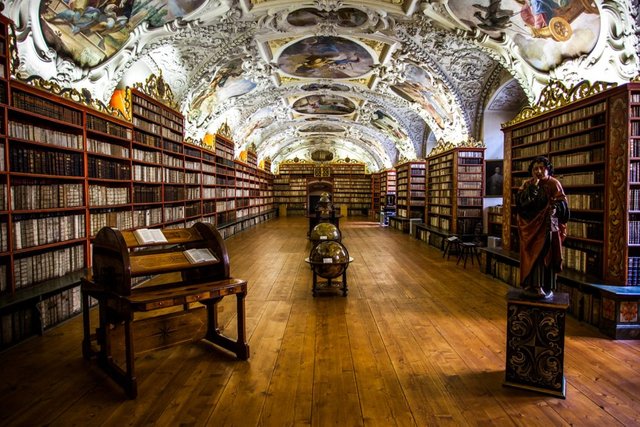Most beautiful library in the world: Clementinum library
The ancient library houses ancient literary works and the complex is still being expanded on today.

Photo: Wikimedia Commons
PRAGUE – Clementinum Library in Bohemia is possibly the most beautiful library in the world with over 20,000 books, some dating back to the 17th century.
The library was officially opened in 1722, but books from the time of the Jesuits can still be found, with white spines and red marks. Most of the books are foreign theological literature, with some of the rare ones given to Google to be made available on Google Books. The library also boasts of a variety of terrestrial globes and astronomical clocks.
The Clementinum (Klementinum in Czech) is a complex of buildings, established when the Jesuits arrived in Bohemia in 1556. The name was derived from a chapel dedicated to St. Clement which was built in the 11th century. Subsequently, a Dominican monastery was established in the same place, becoming home for the Jesuits.
The monastery later became a university and then in 1622 became the third largest Jesuit university in the world. 31 years later, the Jesuits started to reconstruct and expand the complex. In a span of 170 years after, the university expanded by more than 2 hectares becoming one of the largest building complexes in Europe. Today, it is the second largest complex in Prague, after the Prague Castle.
The complex was run by the Jesuits until 1773 when their order was dissolved. Two years later, a weather recording lab started operating as part of the Clementinum University. Today it is still functioning, and is the oldest weather recording lab in the Czech Republic.

Photo: Fubiz
While it remains a mesmerising example of Baroque architecture, there are other architectural styles in the complex formed during its renovation. Bedrooms, a print room, church buildings, a pharmacy, and the library can also be found in the complex other than the classrooms.
The frescoes on the ceiling, which show Jesuit saints, guests of the university and symbols of education, are created by Jan Hiebl. Joseph II, the Emperor who moved the books from the abolished monastic libraries to the Clementinum Library, has his portrait hung at the head of the library hall.

Photo: Klementinum.com

Photo: Olivier Martel Savoie
The university and library was declared open to public by Empress Maria Theresa of Austria in 1777, and four years later the director of the library Karel Rafael Ungar built a collection of Czech literature, which he named Biblioteca Nationals. This was the inspiration for the establishment of a national library. This collection can still be found at the head of the library hall.
A year later, the library turned into a legal deposit library. It was only in 1990 did the Clementinum become recognised as the National Library.
The library is still operating today, with a debate occurring the past few years regarding the expansion of the library. There was fear that the library would reach its capacity by 2010, thus the Prague authorities decided to sell one of the city-owned property to the National Library in January 2006.
That year, an international architectural competition was launched to pick a design for the new National Library building, with architect Jan Kaplicky winning the contest. The final project is currently in the works.